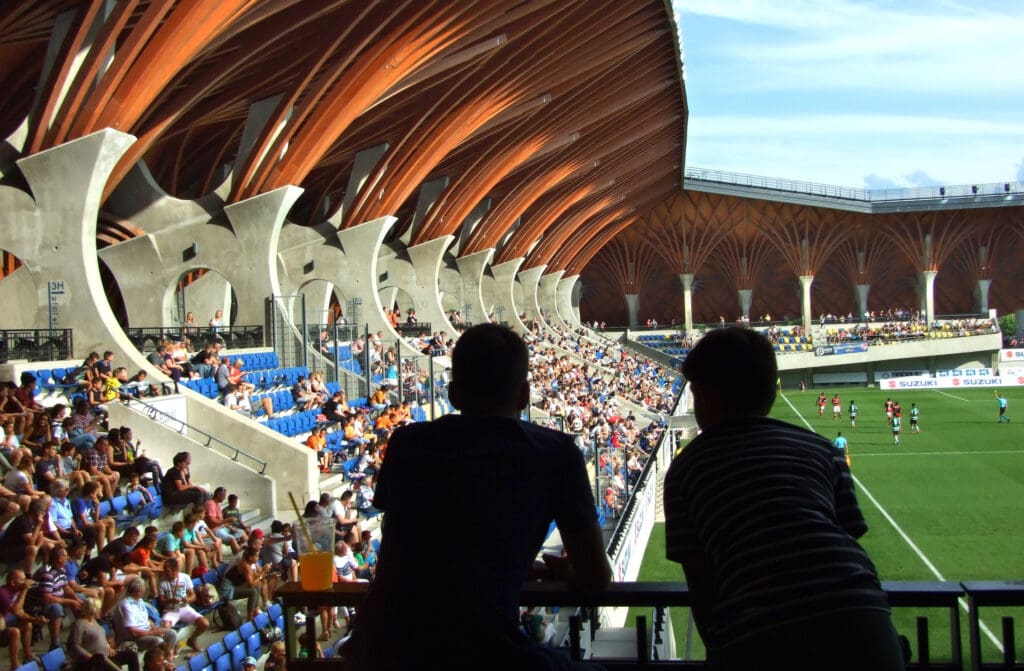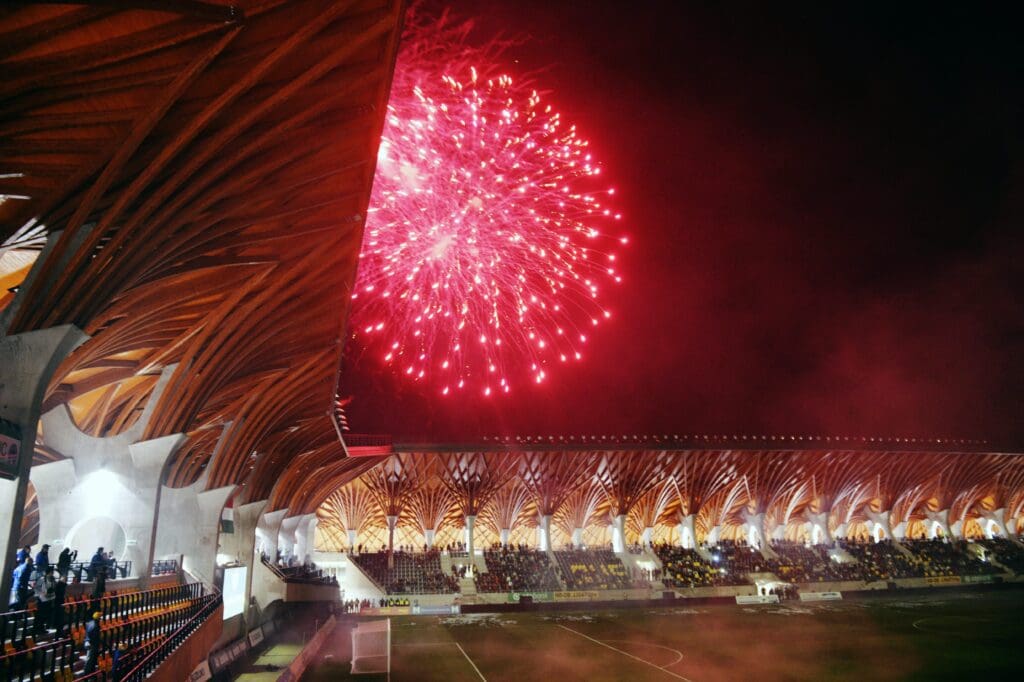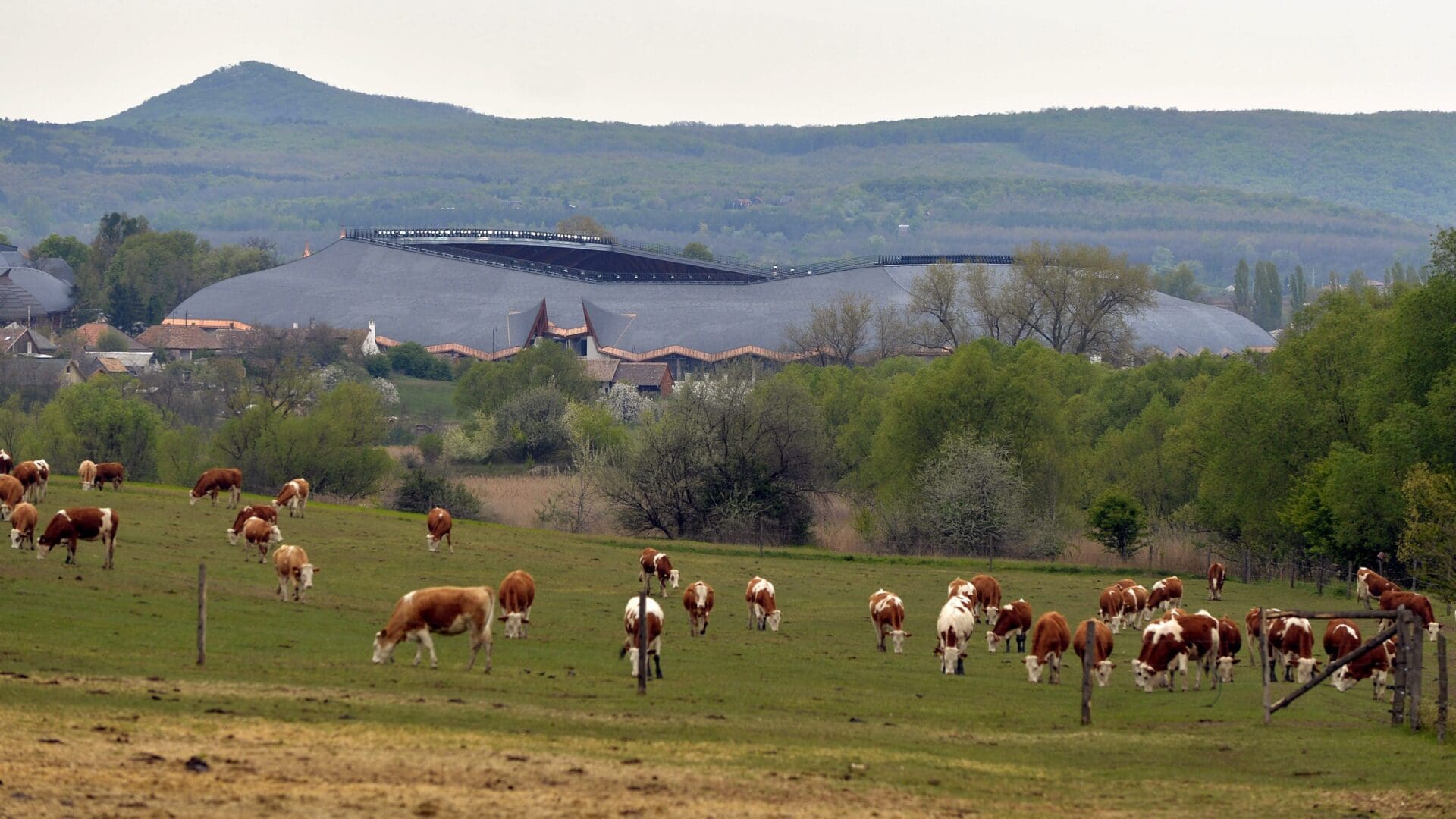Nestled in the picturesque Váli Valley, just 40 kilometres (25 miles) west of Budapest, lies Felcsút, a quaint village with a population of 1,800. It was in this idyllic setting that Hungary’s premier youth football academy was founded in 2004, bearing the name of one of the world’s greatest football legends.
The academy adopted the name of Ferenc Puskás, the iconic Hungarian footballer, who was not only an Olympic champion but also a three-time winner of the European Cup and a FIFA World Cup silver medallist. Puskás, known as ‘Pancho’ to his Real Madrid teammates, enthralled the world both as a player and a coach, making his mark in countries spanning from Australia to Chile, Egypt, Canada, and Saudi Arabia. He was renowned for his warm and generous personality, which extended to his mentoring of young talents. When the Puskás Football Academy was established in 2008, it aimed to continue this noble tradition of nurturing future football stars. As the popularity and demand for a stadium grew, the academy unveiled the Pancho Arena in 2014.

The first building of this complex was repurposed from an old aristocratic manor, designed by Imre Makovecz, a pioneer of Hungarian organic architecture. Subsequently, the academy unveiled its professional and medical centre, as well as a restaurant entrusted to Tamás Dobrosi, a former pupil of Puskás.
With around ten grass and artificial turf training pitches already in place, the idea of constructing an indoor centre stage emerged.
However, the academy was thinking globally by this time.
It aspired to build a stadium compliant with UEFA Category III, suitable for hosting any international football event up to the 2nd round of the UEFA Champions League and UEFA Europa League qualifiers, not just domestic matches and youth tournaments.
And soon enough, the stadium did host European club competition matches. The top-tier professional team Puskás Akadémia FC, who use the venue as their permanent home pitch, qualified for the Europa League in 2020, and then for the Conference League in 2021 and 2022. They hosted the Finnish Inter Turku, the Latvian RFS, and the Portuguese Vitória de Guimarães in the Pancho Arena. In addition, the stadium served as the temporary venue for MOL Fehérvár FC (today’s Fehérvár FC) while their stadium in Székesfehérvár was being renovated.
And now, the Pancho Arena is taking on its biggest ‘role’ as temporary host to date—the Israeli National Team will be playing their two remaining home qualifiers there,
due to the Hamas attacks in Israel.
What Is the Capacity of the Pancho Arena?
Today, the trend has shifted towards smaller, efficiently run, and multifunctional sports facilities, deviating from the massive stadiums of the past that could accommodate over a hundred thousand spectators. Considering that this arena primarily serves as the central pitch for a residential football academy, its focus was on achieving a higher level of comfort rather than increasing the seating capacity. The stadium boasts 3,400 seats.
A separate VIP section can accommodate up to 420 distinguished guests and is reminiscent of the academy’s intimate, family-like atmosphere. On the upper level of the western wing, seven private boxes with full services are available for main sponsors. In terms of media facilities, the stadium provides five TV commentary positions, a 50-seat press conference room, a 70-seat media tribune, and studios to ensure high-quality live broadcasts for any event.

Beyond its functionality, the facility stands as a symbol of architectural innovation.
The lattice-like wooden roof structure, borne by reinforced concrete pillars above the stands, evokes the imagery of a tree canopy fringing a clearing. The arena’s covering emphasizes its unique design, showcasing a balance between creative form and practical function, offering an alternative to the rational style of contemporary Hungarian stadium architecture.
Since the stadium is located within a rural community, the impact of its external facades may be limited. However, its internal architecture, expressed through elements such as soaring roof extensions that break the monotony of the exterior shell, creates an intimate and captivating atmosphere. These glimpses into the arena’s interior offer an enticing taste of the intense battles happening on the ‘pitch.’
It is essential to note that the built environment, including the Pancho Arena, serves as a stage and support for the academy’s professional work. The Puskás Academy offers aspiring young footballers the opportunity to receive tuition-free training, provided they exhibit the necessary dedication and commitment. Hungarian internationals Roland Sallai, László Kleinheisler, and Zsolt Nagy have graduated from the academy. But it is not just about producing top-tier footballers; the academy aims to nurture individuals who can excel in other aspects of life as well.
In line with this philosophy, the built environment, including the Pancho Arena, seeks to inspire the community, offering a reference point for pride, fostering further encouragement for striving towards the example set by these footballing heroes.
Related articles:








